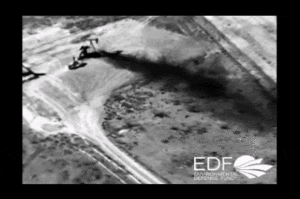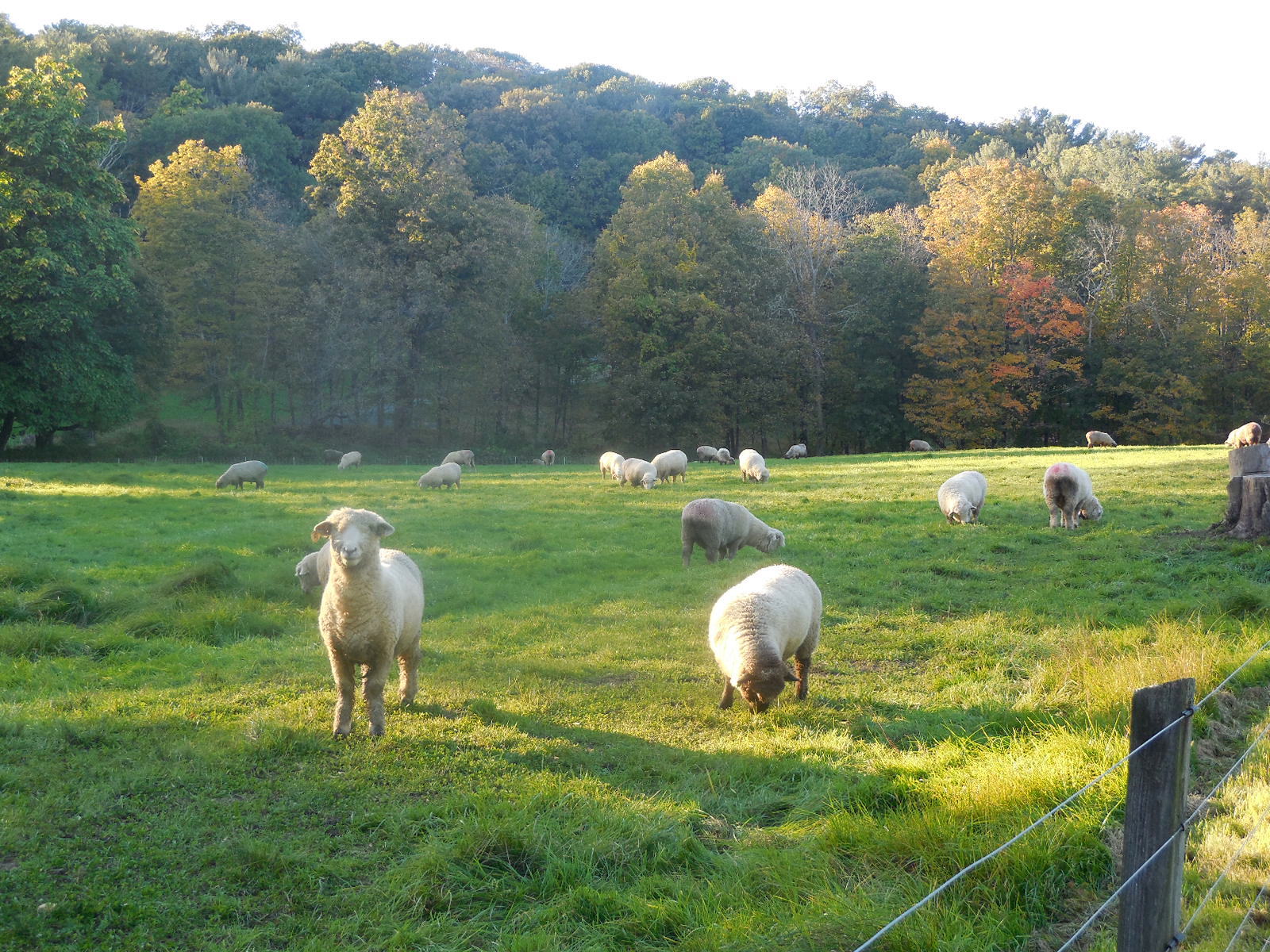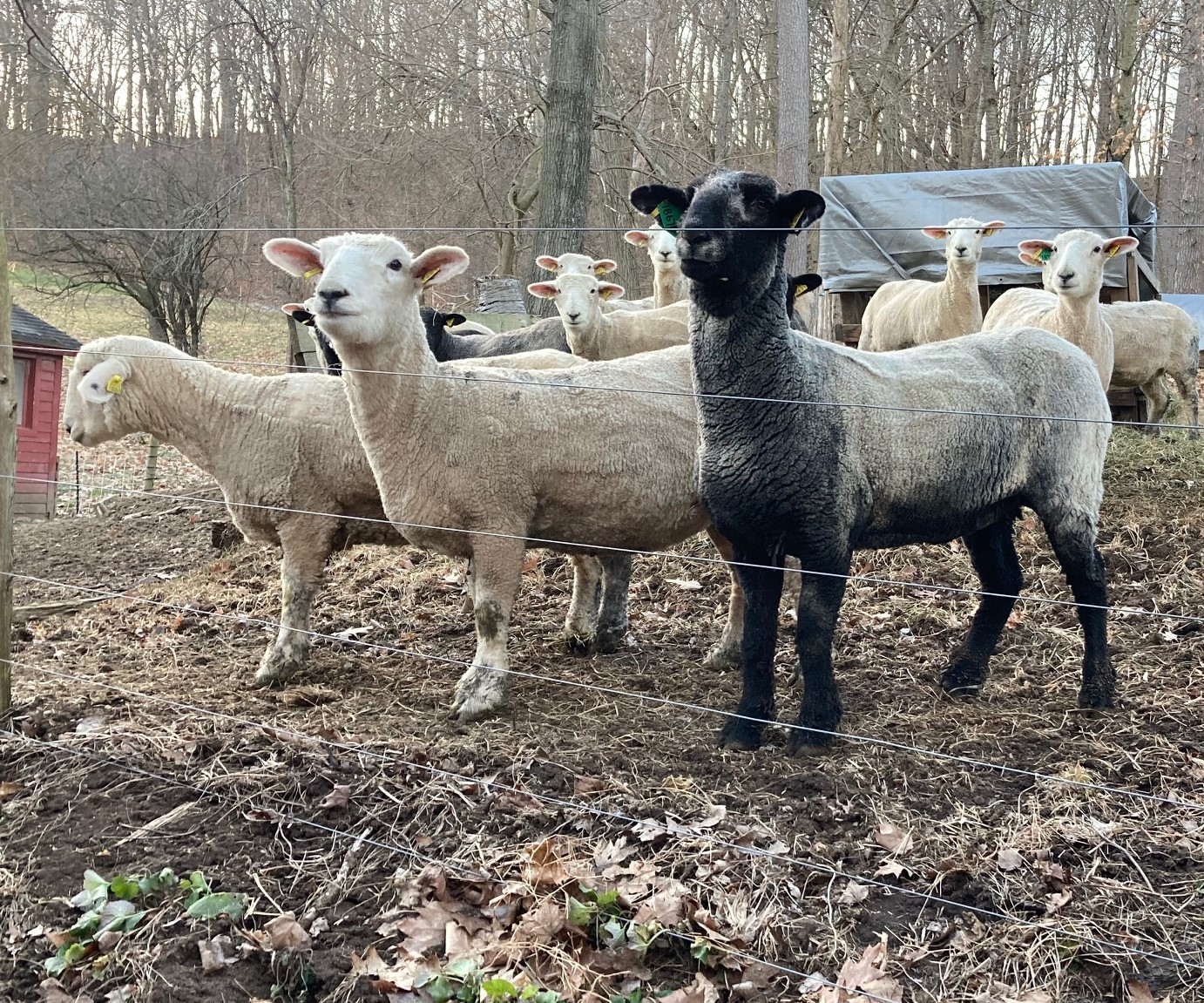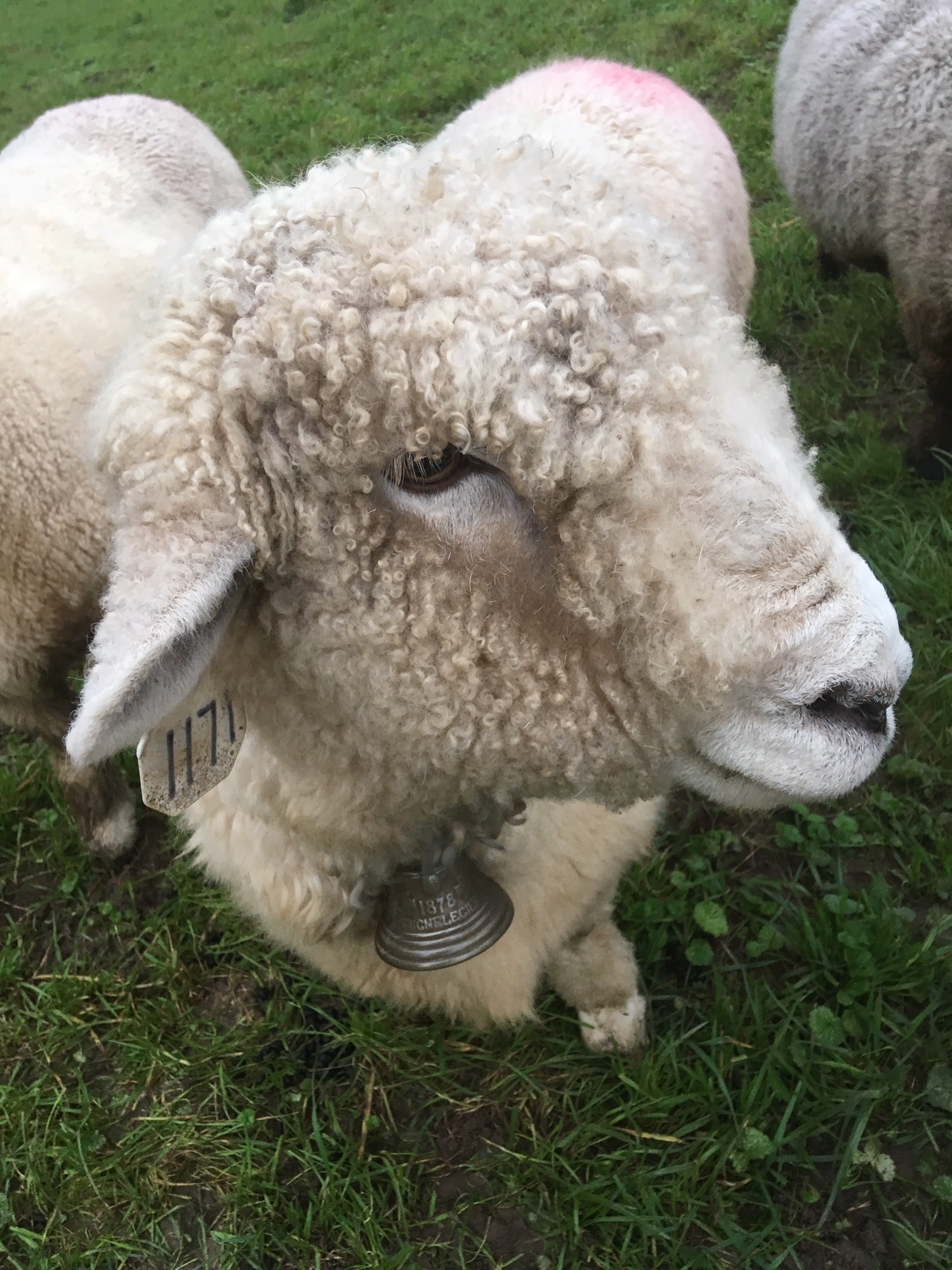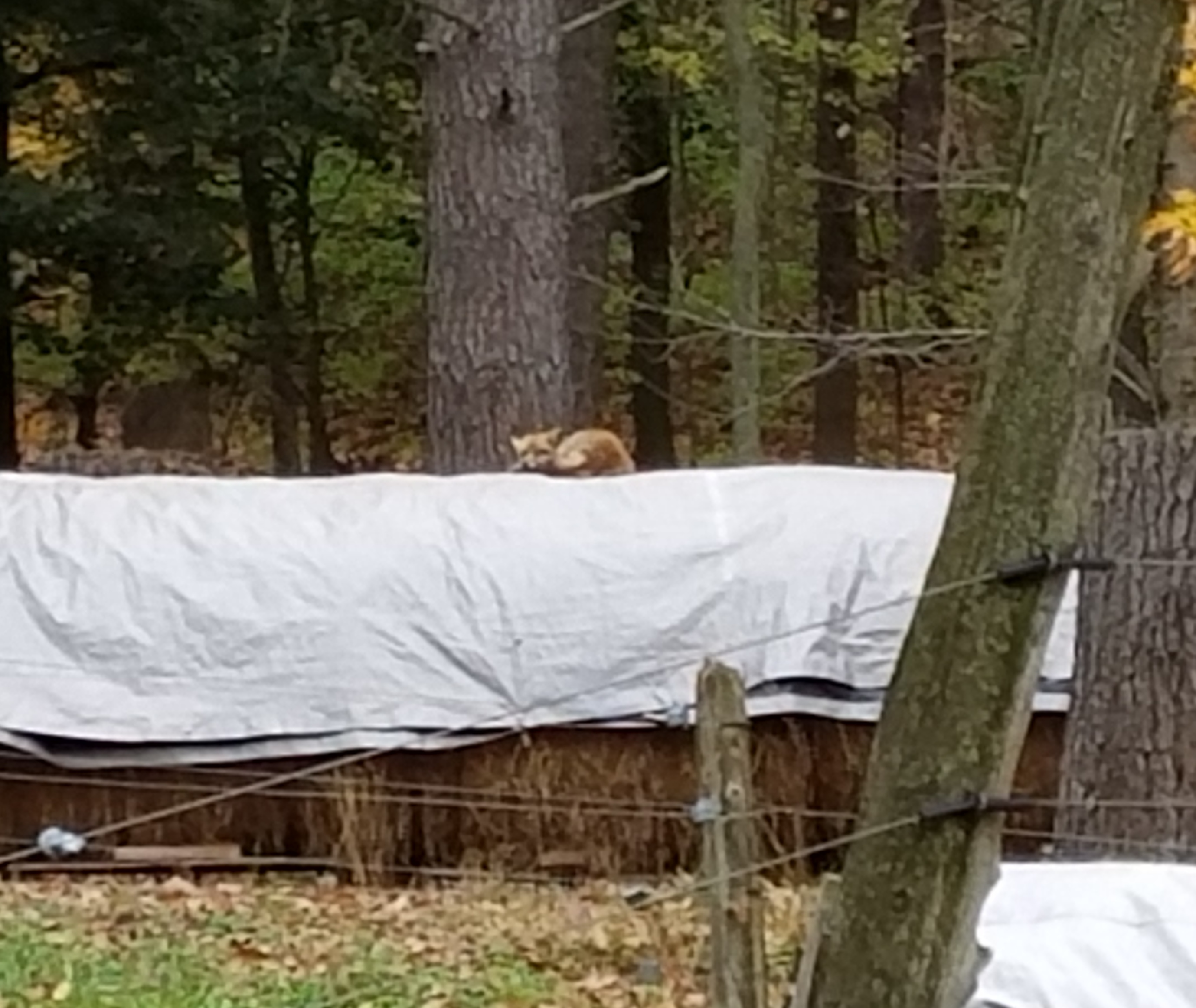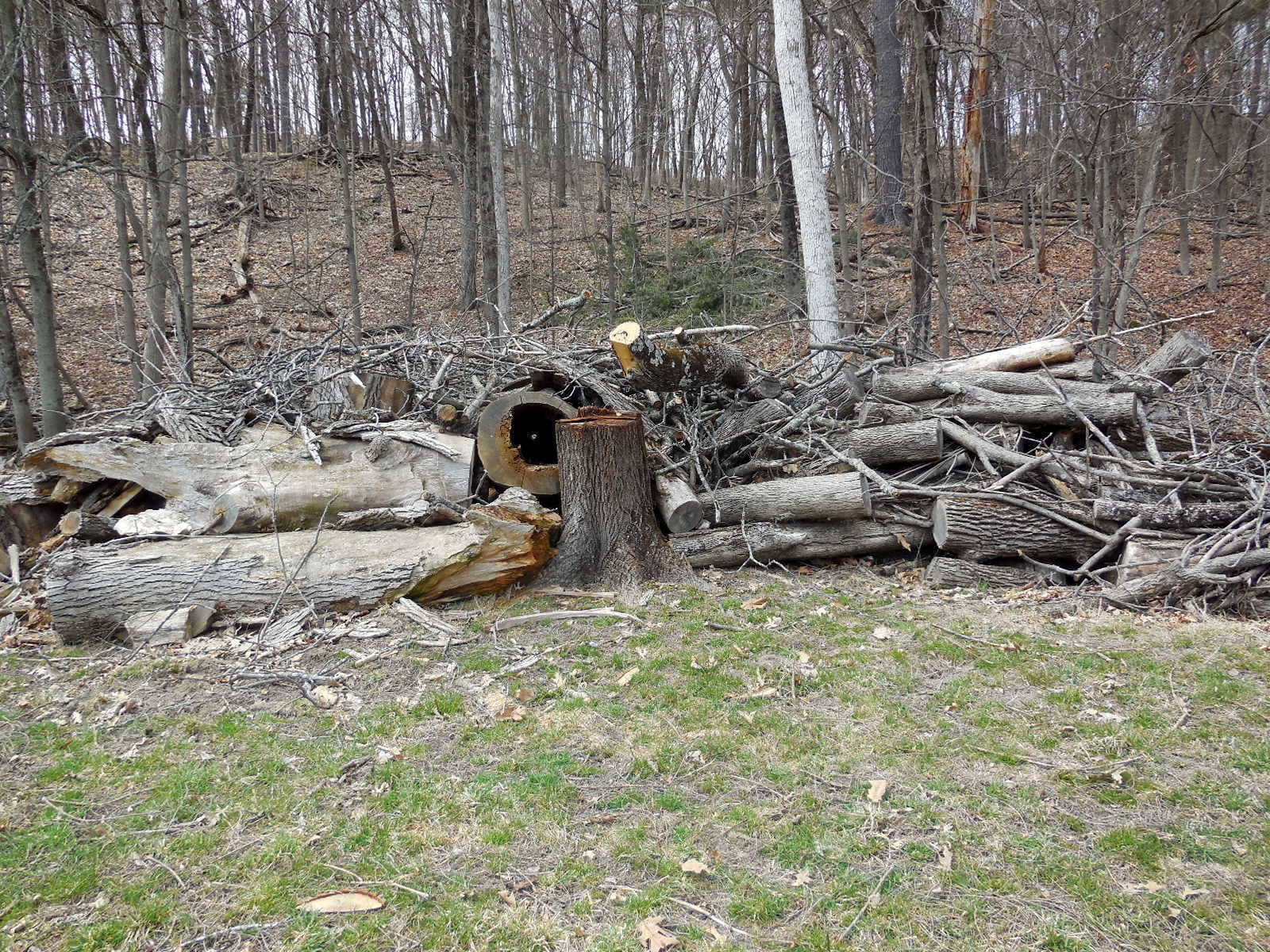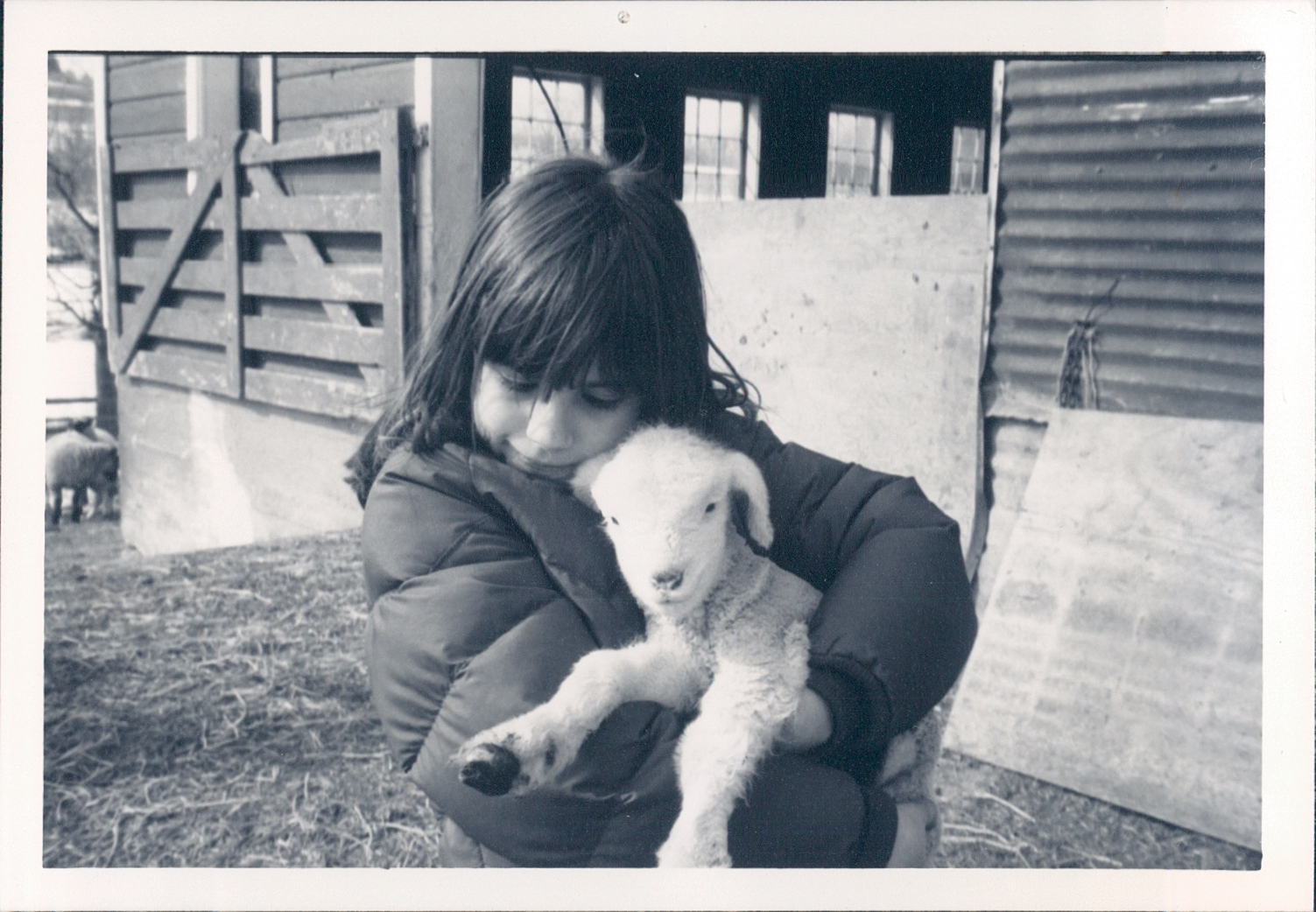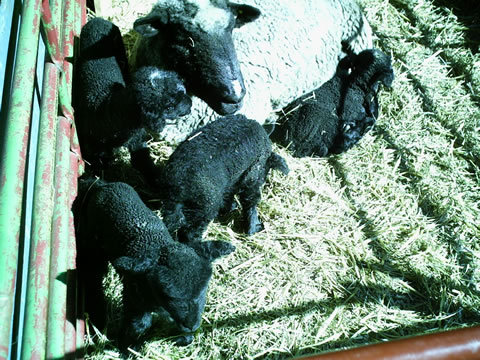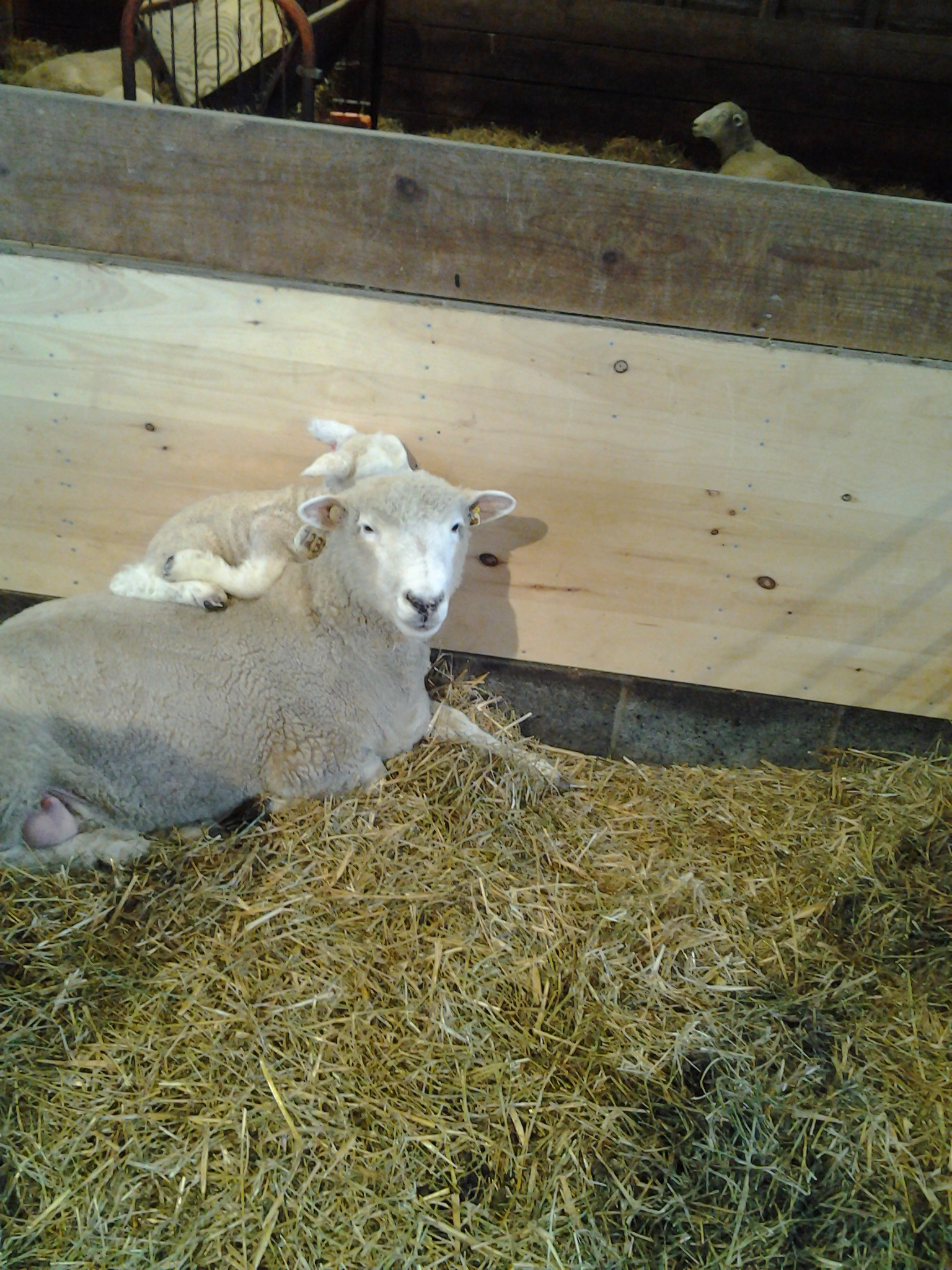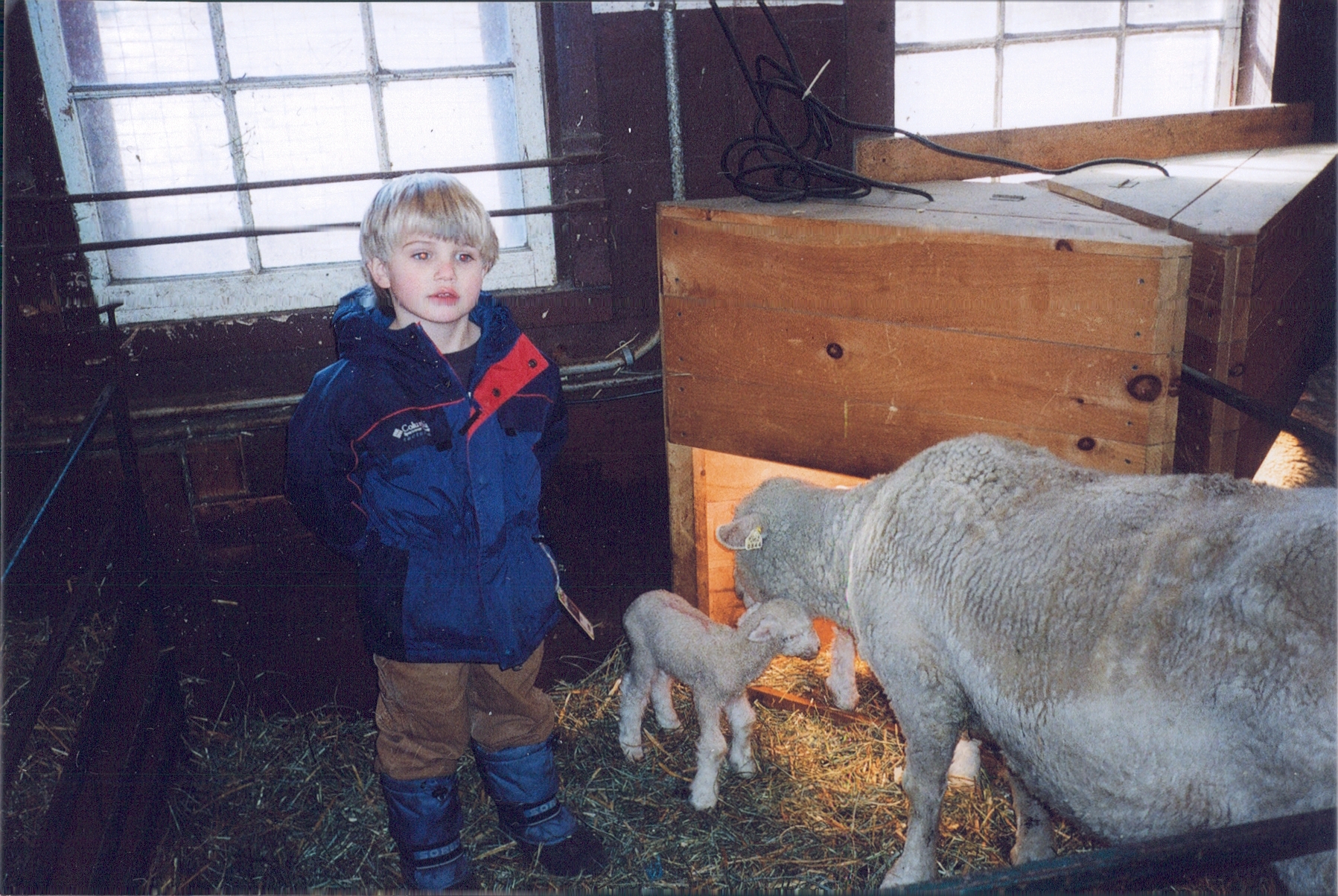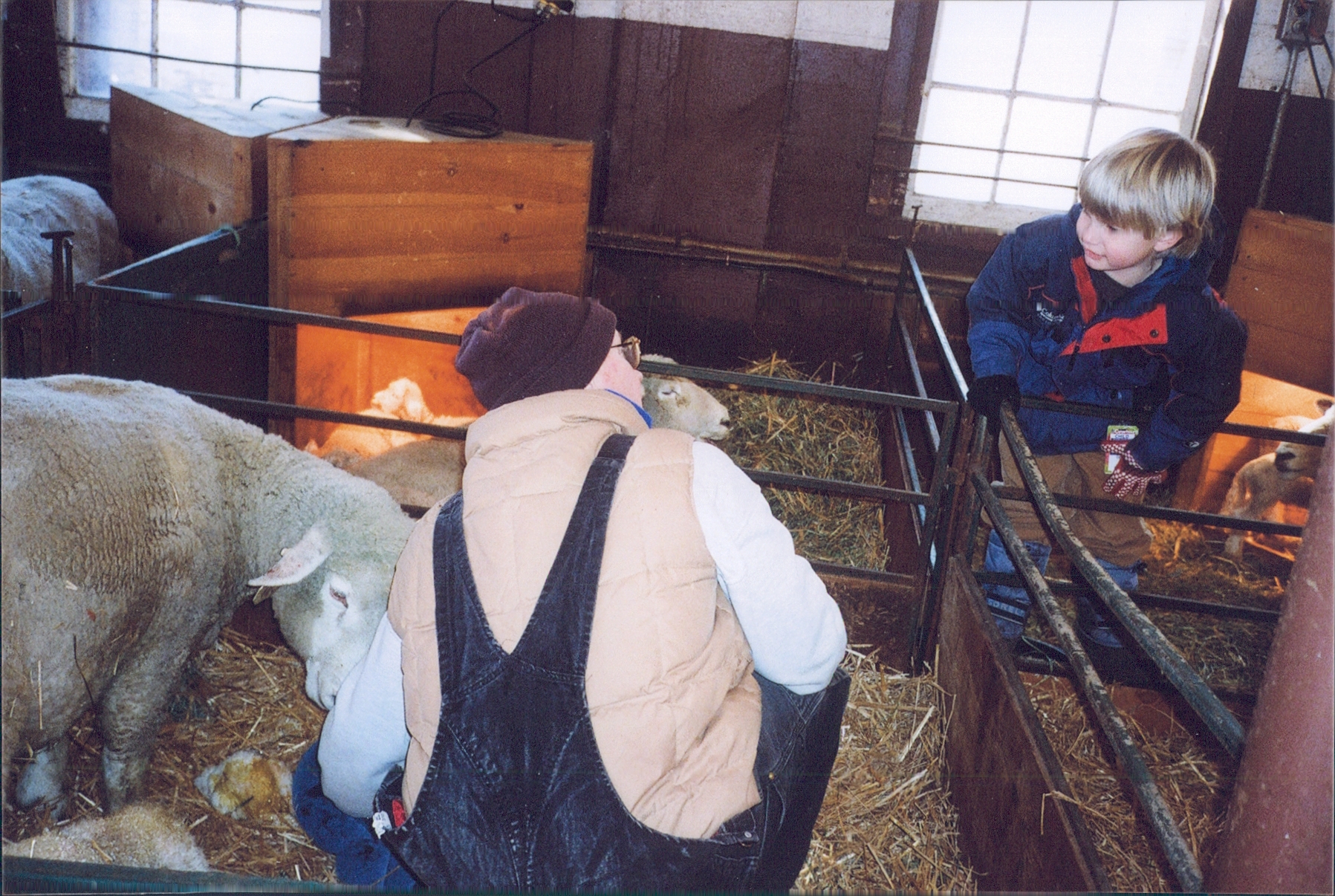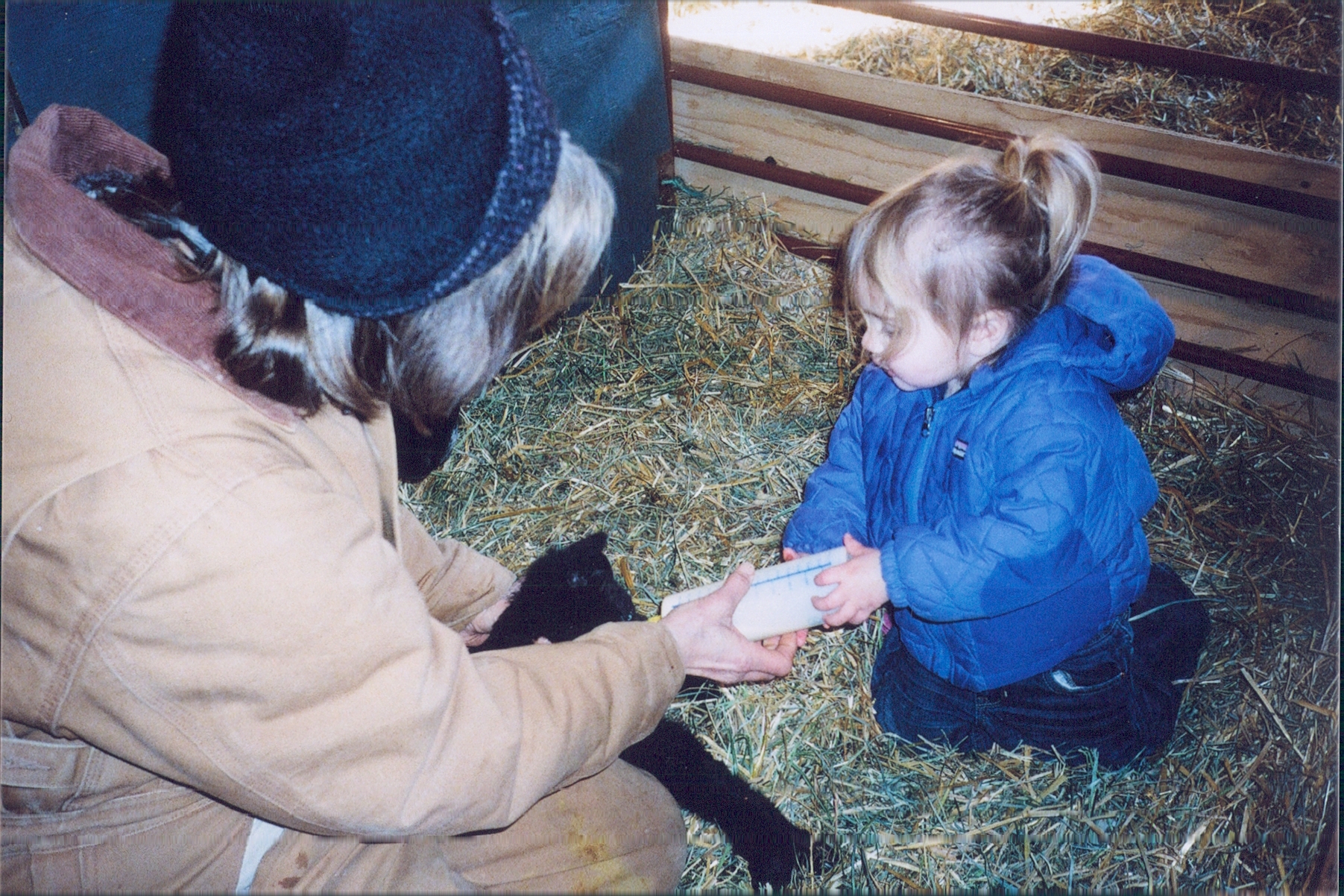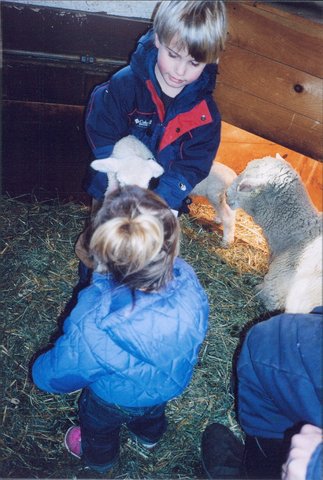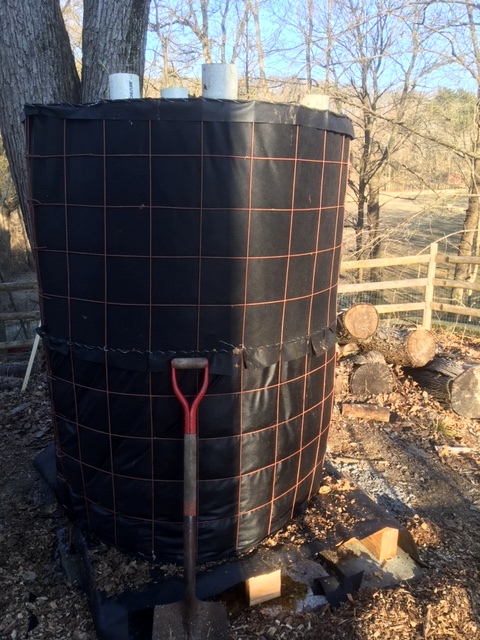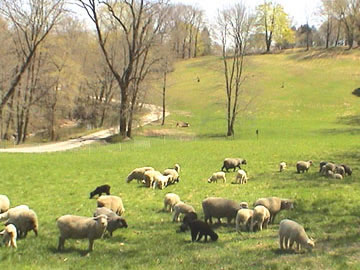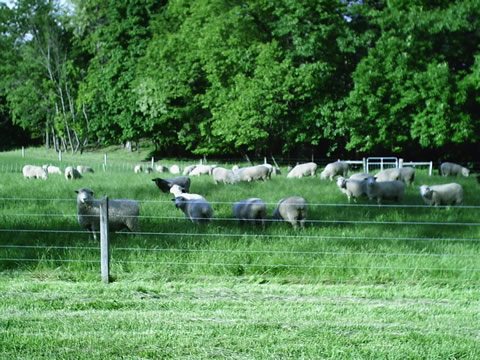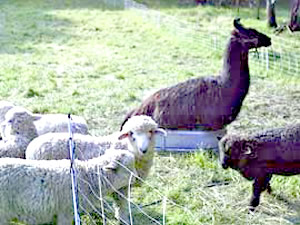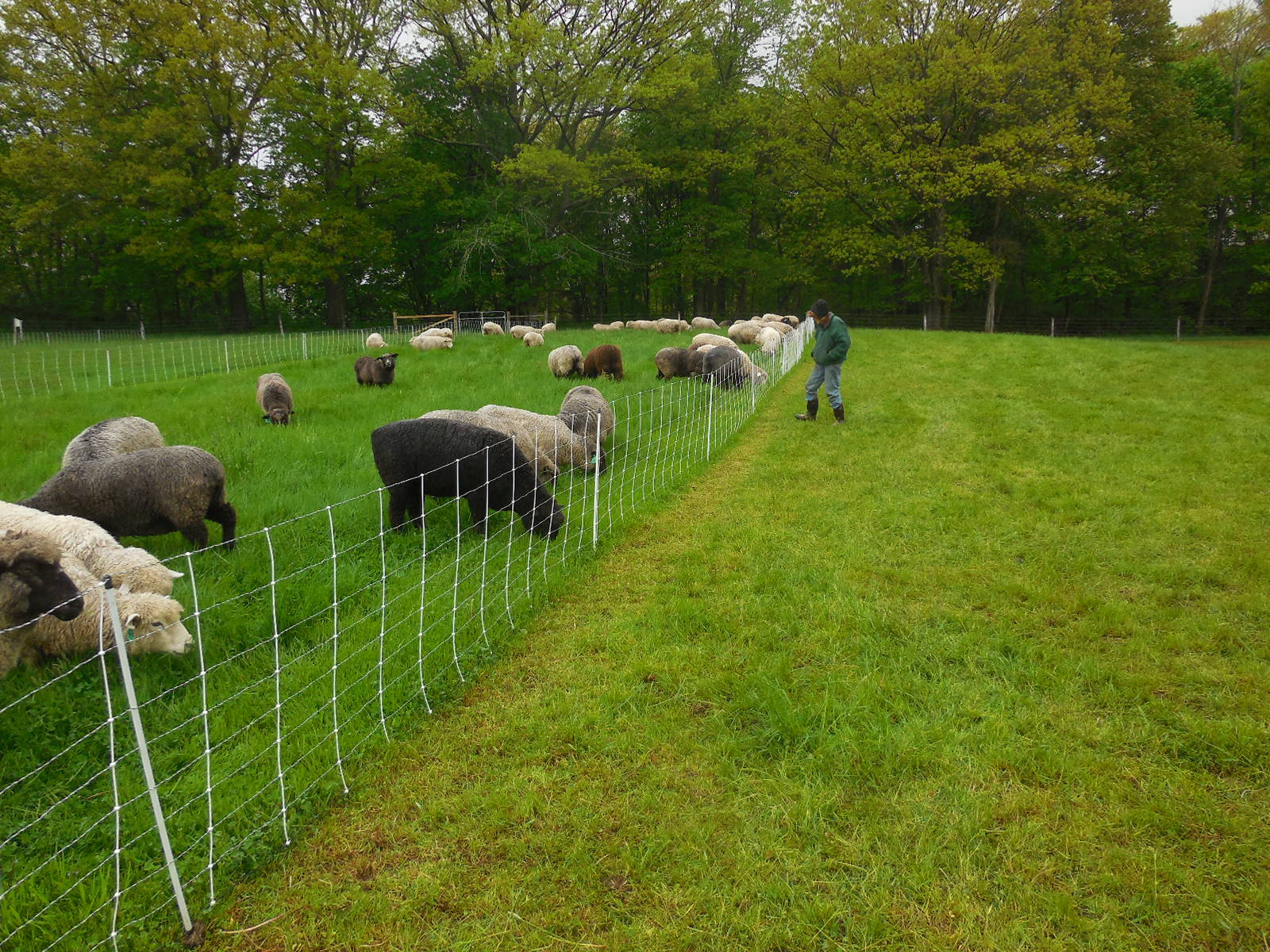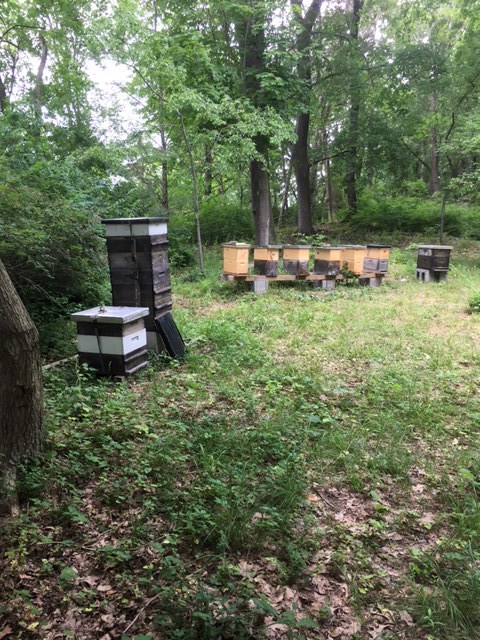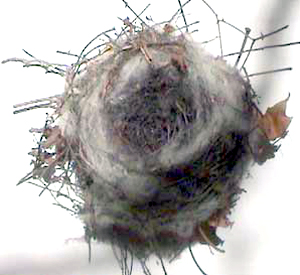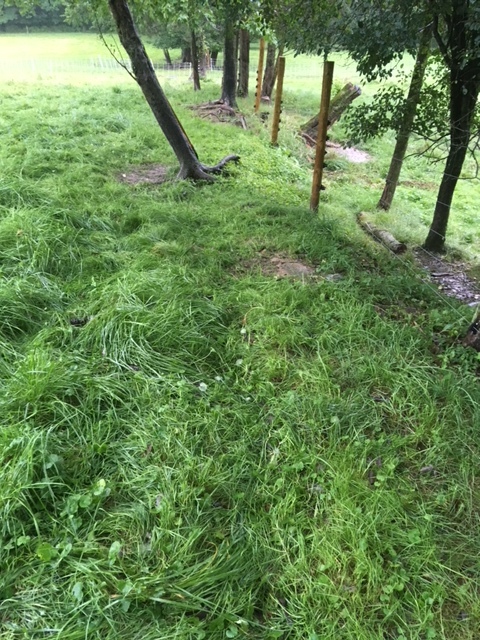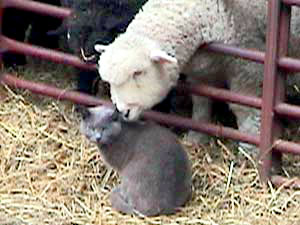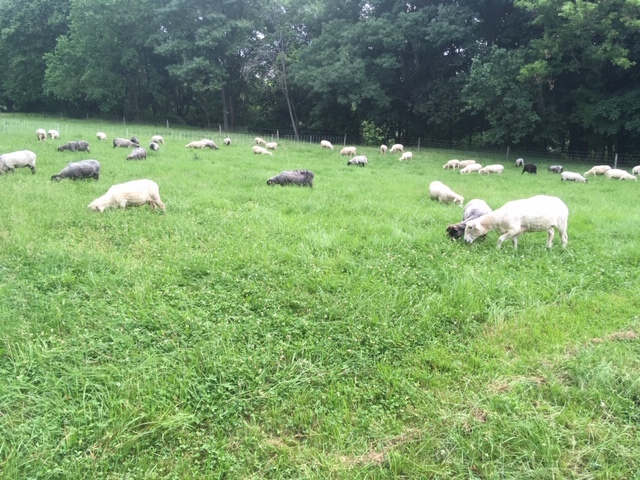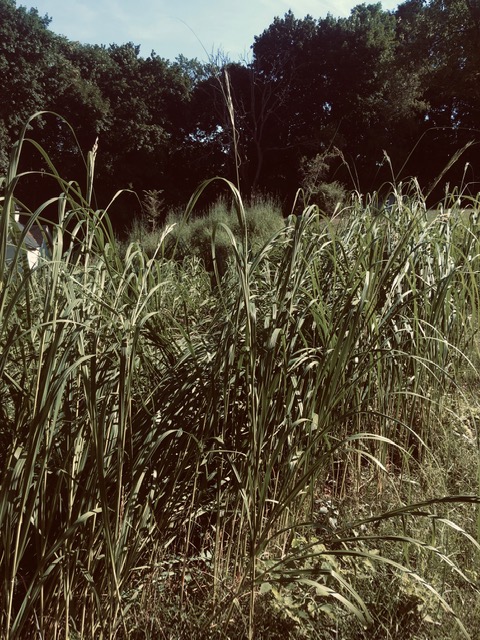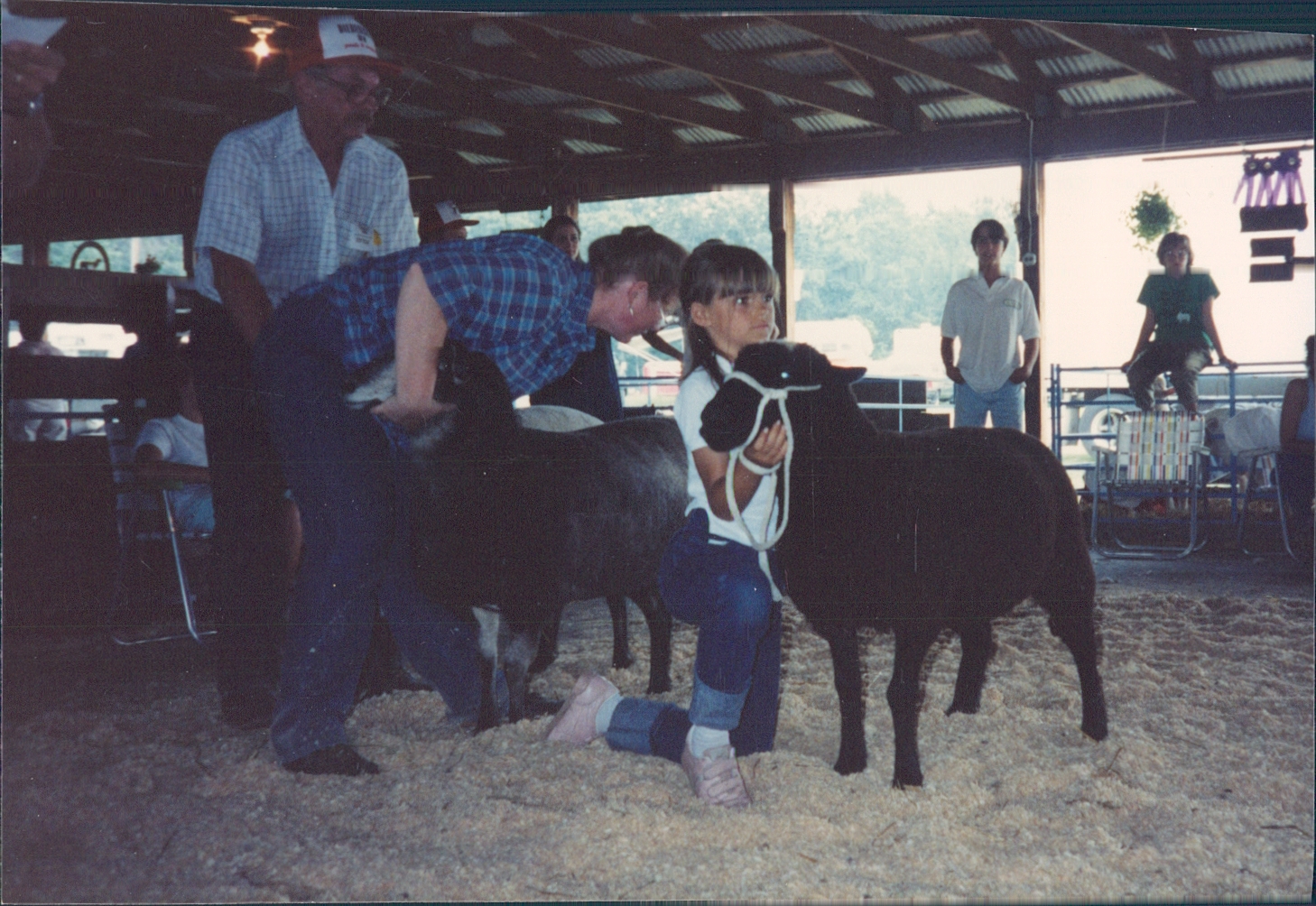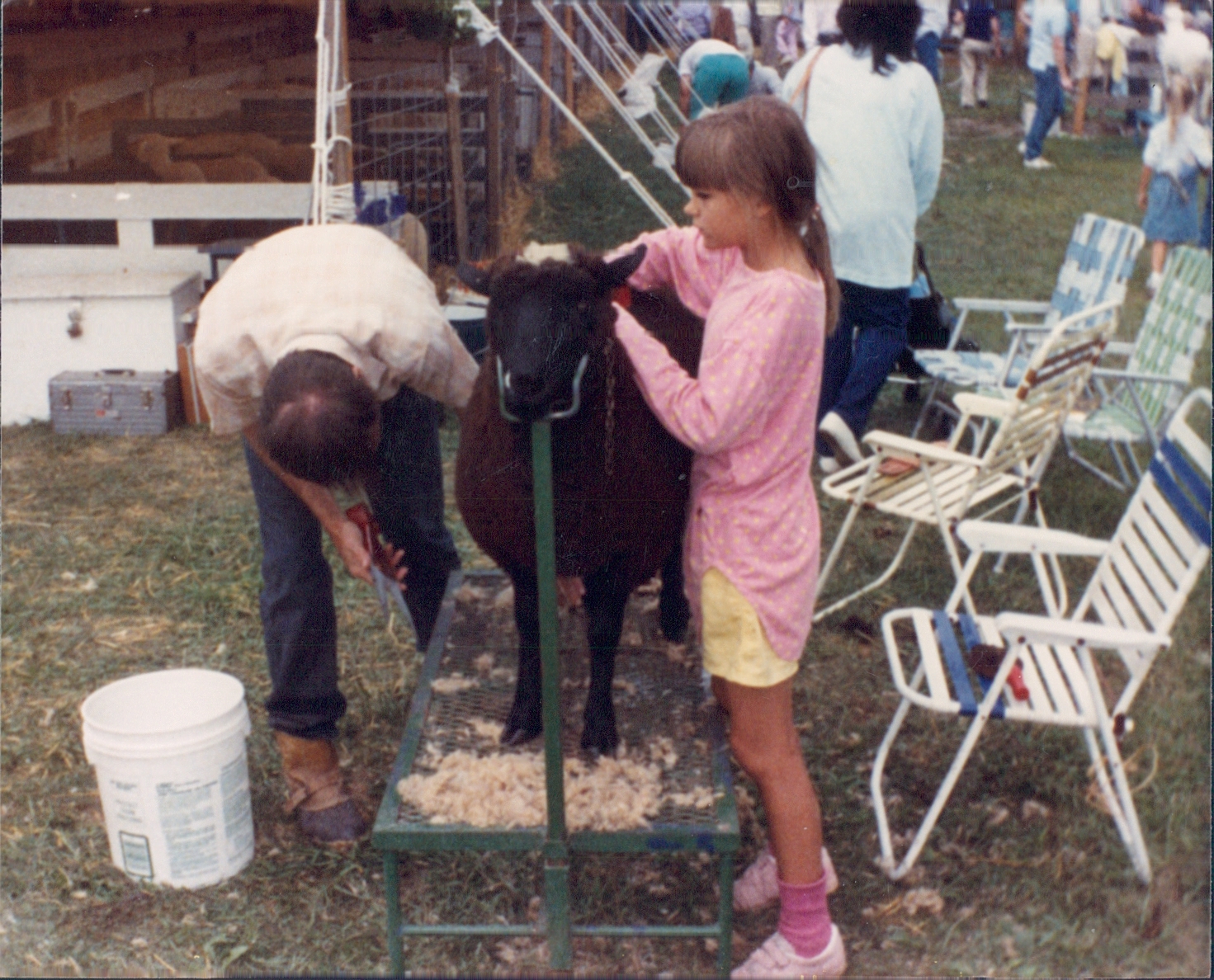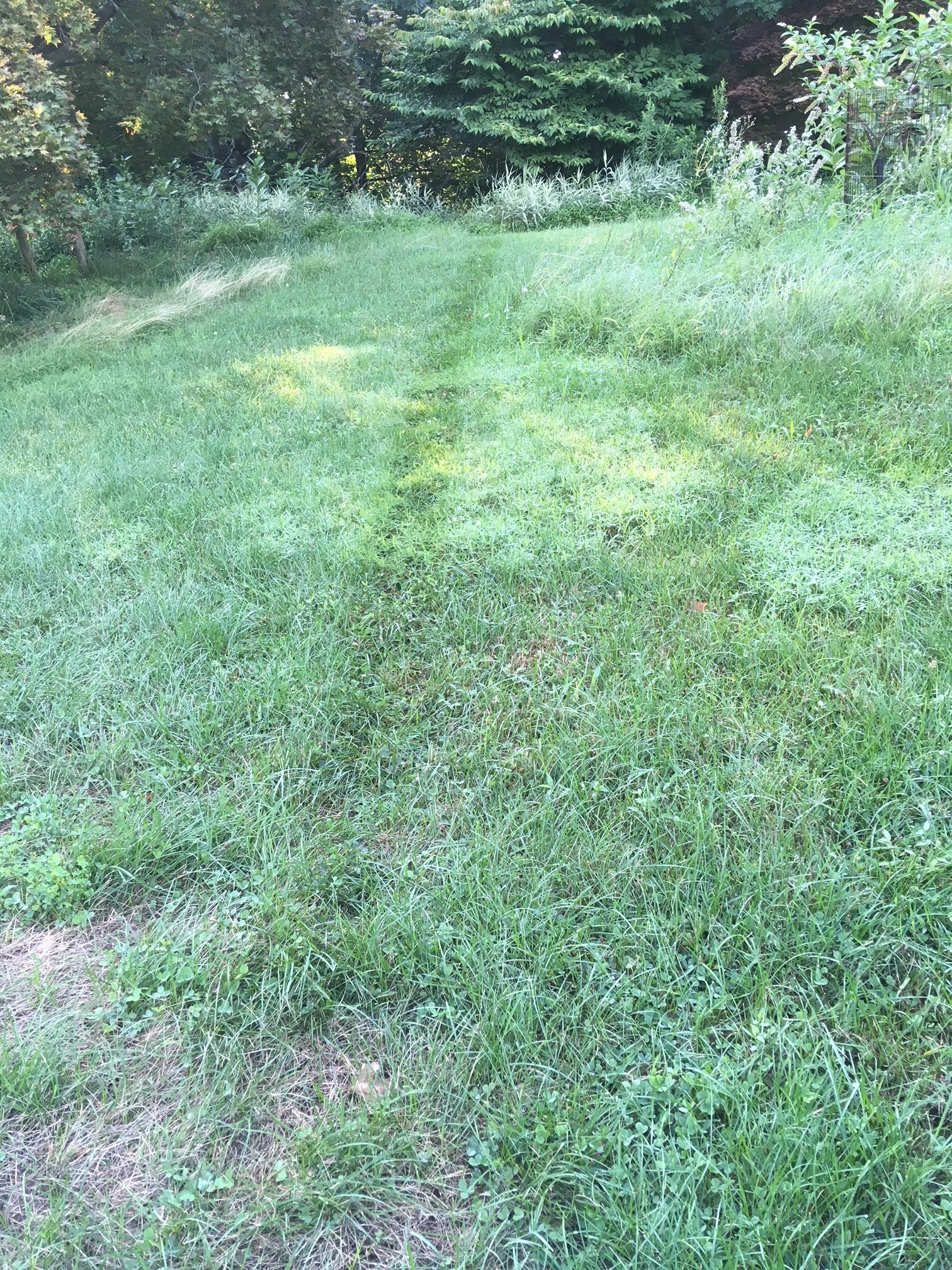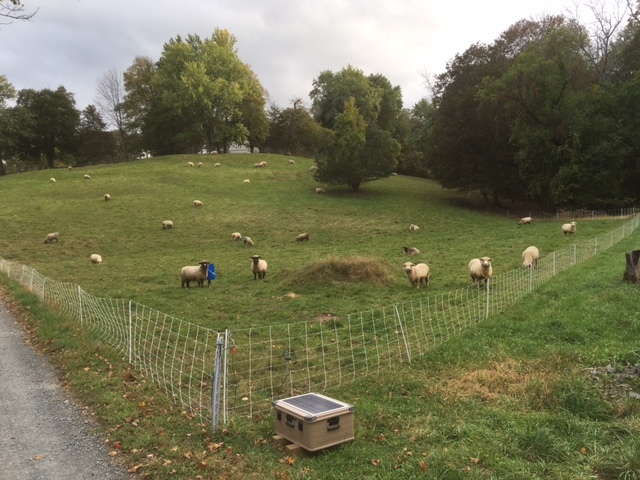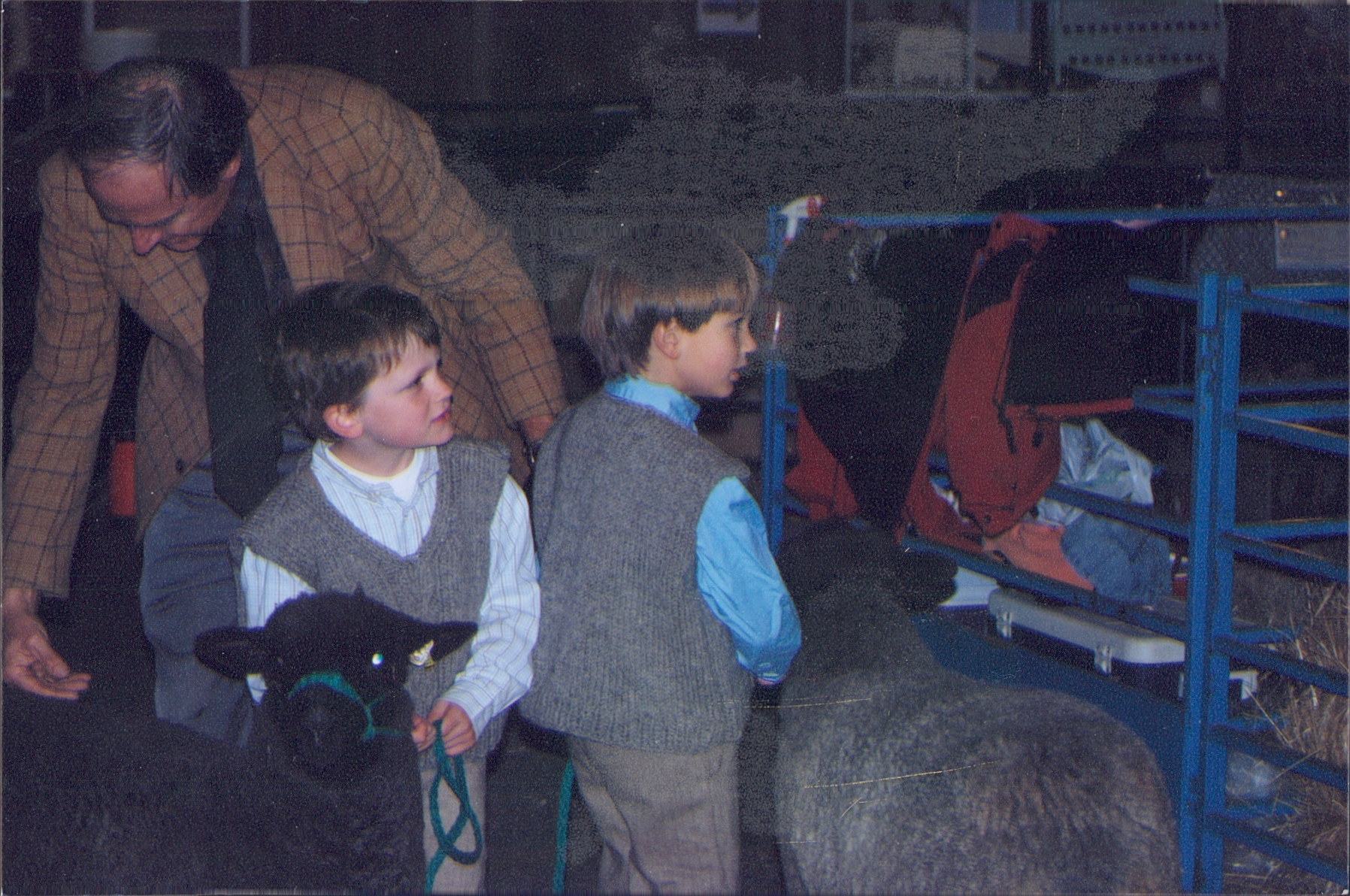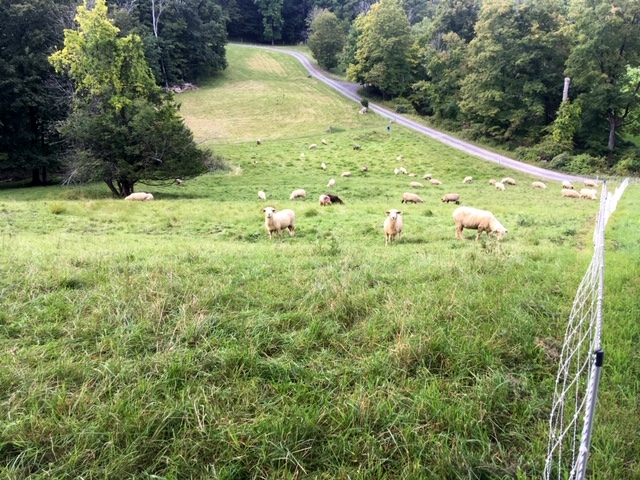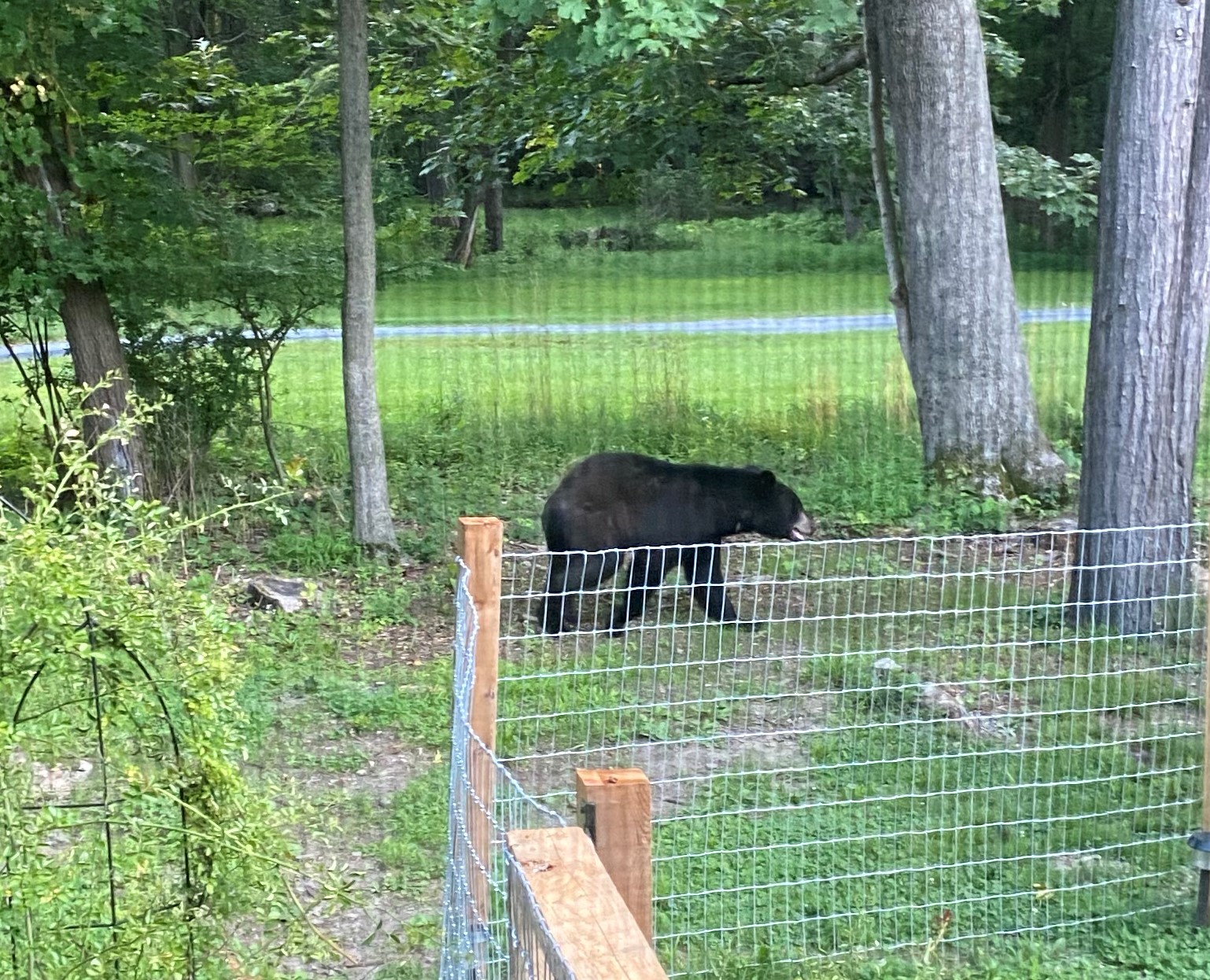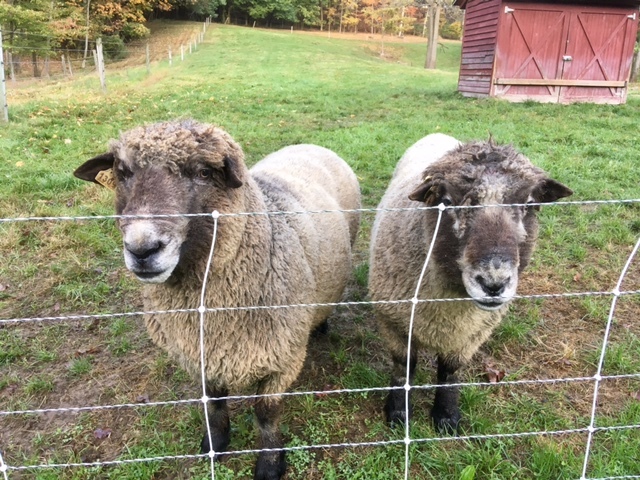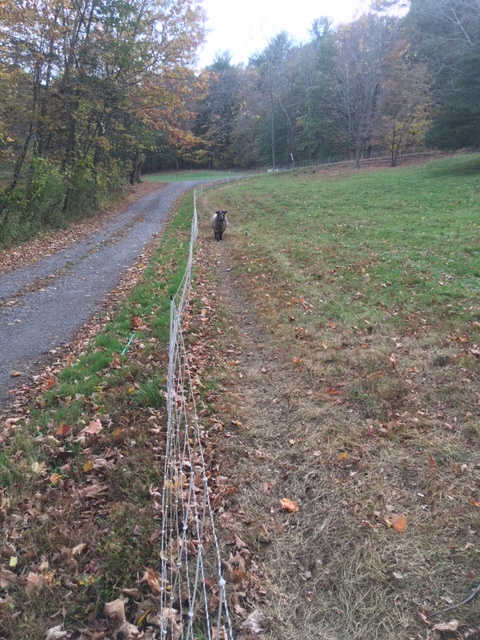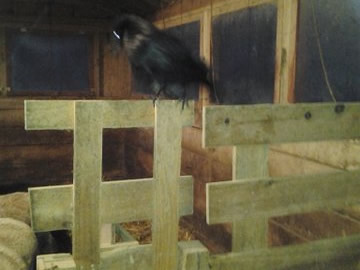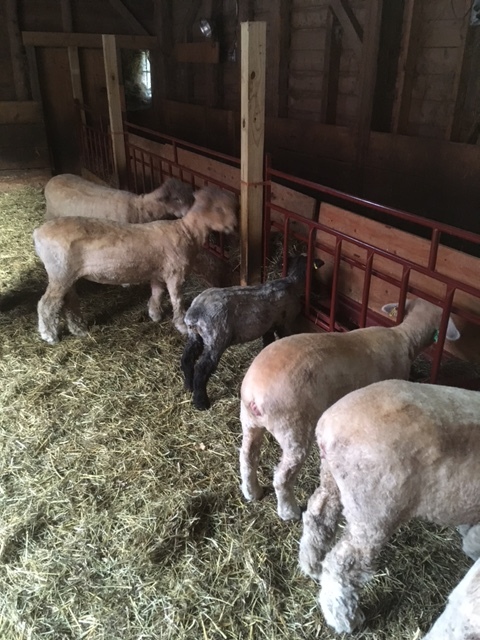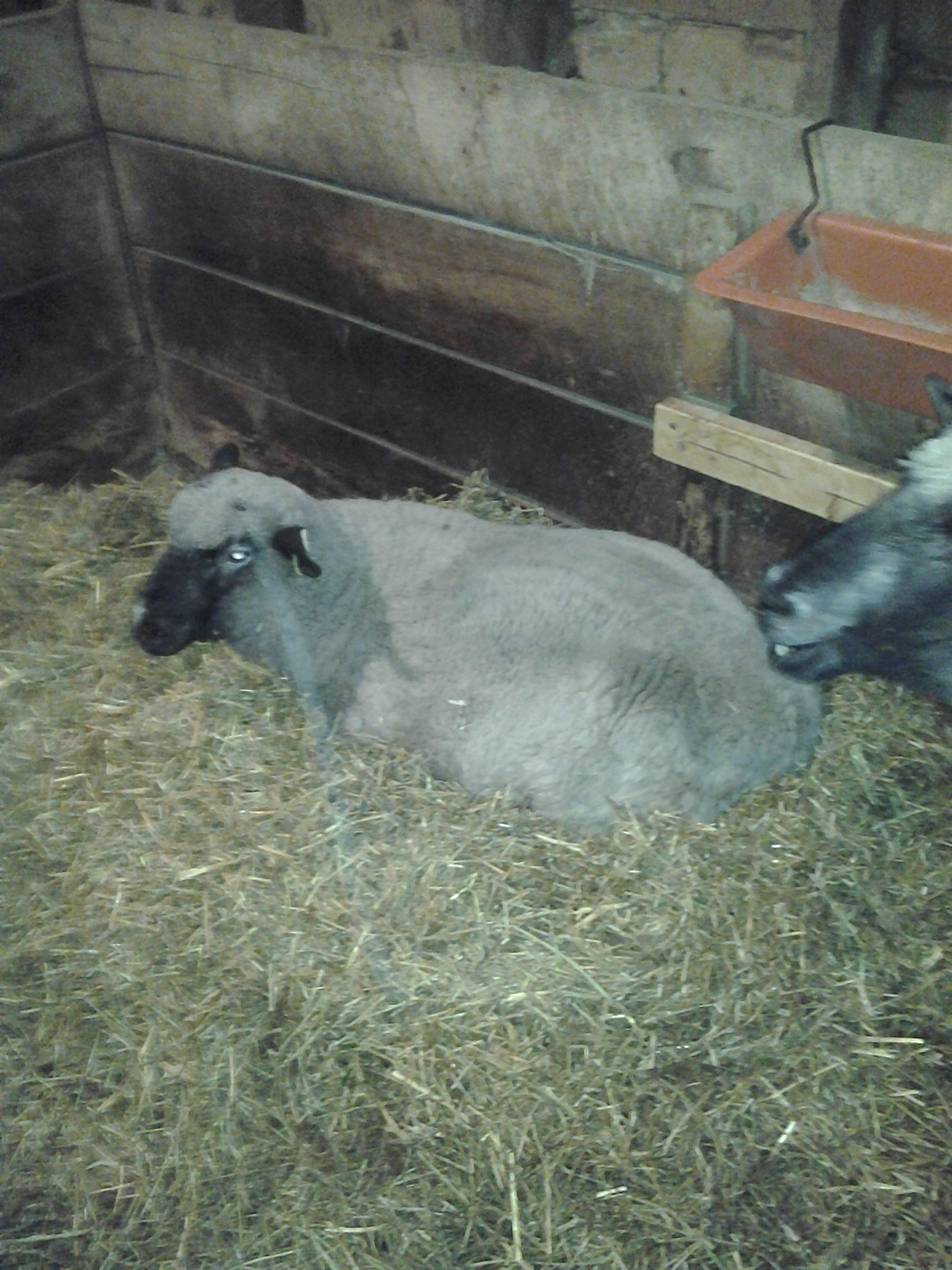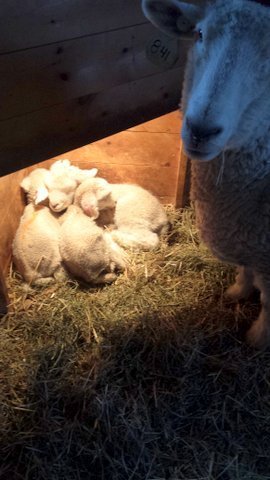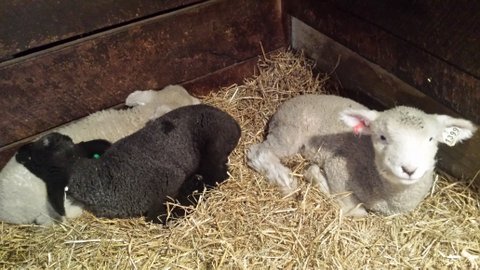Greenhouse Gas Balance Sheet for Anchorage Farm
A greenhouse gas (GHG) balance sheet for a farm with livestock has three main entry categories – carbon dioxide (CO2), methane (CH4) and nitrous oxide (N2O). CO2 is the GHG that by any credible calculation accounts for the lion’s share of the recent rise in global average surface temperatures. Its physical capacity to prevent heat from escaping the planet’s surface as infra-red radiation is the standard to which all other GHGs are compared by the ratio called global warming potential (GWP).
The photograph by Environmental Defense Fund is meant to catch your eye. It uses Thermal Infrared Hyperspectral Imaging to visualize as a black cloud methane emissions from a natural gas withdrawal facility unseen by the eye. Its relevance to this essay will emerge in section 2, on methane.
Emissions of all GHGs and of other atmospheric pollutants are supposed to be reported by large companies in three categories referred to as scopes 1, 2 and 3. Scope 1 (direct) includes emissions under the direct control of the reporting company’s management. An example is gas and particulates emitted from the stacks of a plant that makes cement or steel using heat from combusting fossil fuels. Another is tailpipe emissions from the fleet of delivery vehicles (think Amazon). Scope 2 indirect are indirect emissions such as stack gas from an offsite fossil-fueled station that generates and transmits electric power to a reporting company like Google. Significant scope 2 indirect emissions can go un- or under-reported by large companies. An example is fugitive emissions of methane between fracking well and gas-fired generating plant.
Scope 3 indirect emissions are the hardest to delineate and track. These can be upstream (related, say, to the manufacture of equipment that will be used by the reporting company or to employee business travel) or downstream, like tailpipe emissions from vehicles running on gasoline or diesel. It’s important to avoid double-counting, equally important that nothing is hidden or effectively disowned. Who, for example, is ultimately responsible for tailpipe emissions of CO2 and other pollutants? These are usually booked by EPA under “transportation. The oil companies that sell gasoline, diesel and jet fuel don’t take responsibility for those products under scope 3 indirect. Exxon (https://corporate.exxonmobil.com/-/media/global/files/advancing-climate-solutions-progress-report/2023/2023-acs-progress-report-executive-summary.pdf ) speaks of achieved or planned reductions in scope 1, scope 2 and “upstream” emissions but is silent on scope 3 indirect downstream. Who would expect otherwise? Manufacturers of single-use plastics similarly deny responsibility for what their products are doing to the waters and biota of the living earth
Households, of course, don’t market a product; so, household “carbon footprint” calculators don’t have scope 3 downstream emissions. For example, the EPA household calculator https://www3.epa.gov/carbon-footprint-calculator/ combines emissions from heating with gas or oil with those from operating a vehicle and with waste management, all three being under direct control of the householder. The calculator does register scope 2 indirect emissions from electricity generation. Scope 3 indirect upstream is not in this calculator. Theoretically, this could include the energy costs and pollution due to manufacturing and delivering a vehicle or a new water heater or furnace.
A farm that markets a product could be said to have scope 3 indirect emissions downstream, for example methane from animals sold as breeding stock. Oil companies don’t report the climate-breaking downstream emissions from their products. The end-user (Amazon, in our earlier example) is tagged with those emissions under scope 1. It would be absurd for farms to act differently. The emissions of a ruminant after a shift from Farm A to Farm B would theoretically be reported by B in its scope 1 accounting for as long as the animal is there. I say “theoretically” because there is no policy in the USA under which individual grazing operations must now report even guesstimated emissions of exhaled methane. Nor, in my opinion, should there be.
Section 1 Carbon dioxide
The table below shows CO2 emissions attributable to livestock farming at Anchorage Farm circa 2014 with about 45 brood ewes. Scope 1 emissions are in regular type and scope 2 indirect in italic. Scope 3 indirect upstream emissions are marked with an asterisk. The figures in column C are approximate.
A ton of each of the three major greenhouse gases, when dispersed in the atmosphere, blocks the return of infra-red energy to space from earth’s surface to a different extent. Each thus contributes to atmospheric and global warming to a different extent per ton. It is conventional to express the global warming potential (GWP) of methane and of nitrous oxide relative to that of CO2, as a CO2 equivalent, or CO2-e. The GWP of methane relative to that of CO2 is highly unsettled.
In this table and the one following, units of CO2-e equal units of CO2. CO2-e/FU is a term from Life Cycle Analysis meaning emissions expressed as CO2-e per functional unit (FU) of production. Examples of FU in the wider literature include kwh of electricity generated, mass unit of cement, kg of carcass weight, kg of table-ready meat, bushel of grain, or grams of complete and digestible protein.
Small farms do not report GHG emissions to any regulator under any of the three scopes. Thankful that we don’t have to, we can for self-analysis organize our GHG accounting as if we did. In the table below, reflecting conditions about ten years ago, the biggest single entry would be indirect scope 2, “Barns electric nonsolar.“ This shocking usage was due to several months during lambing of 24-hour incandescent lighting and almost year-round use of ventilation fans. Merging for a moment scope 1 and scope 2 shows that heating, cooling, lighting and ventilation of buildings accounted for 26.5 tons of CO2, more than half the total at that time. Using feed we had not grown ourselves (scope 3 upstream indirect) explained almost another 12 tons.
|
B |
C |
D |
E |
F |
G |
|
|
CO2-e/FU |
lbs CO2 /yr |
tonnes |
||||
|
CO2-e/yr |
||||||
|
1 |
Barns electric nonsolar |
33400 kwh |
0.9 lb/kwh |
30060 |
13.7 |
|
|
2 |
||||||
|
3 |
Mgr hse elec nonsolar |
11600 kwh |
0.9 lb/kwh |
10440 |
4.7 |
|
|
4 |
Mgr hse nat gas |
1080 ccf |
11.7 lb/ccf |
12636 |
5.7 |
|
|
5 |
Truck towing vet runs |
455 mi |
37.9 gal |
22.6 lbs/gal |
857 |
3.9 |
|
6 |
Towing shows sales |
1500 mi |
125 gal |
22.6 lbs/gal |
2825 |
1.3 |
|
7 |
Truck no tow no grain |
4145 mi |
345 gal |
22.6 lbs/gal |
7806 |
3.5 |
|
8 |
Tractors diesel |
130 hrs |
43 gal |
22.6 lbs/ gal |
972 |
0.5 |
|
9 |
gas Mowers |
100 hrs |
100 gal |
19.6 lbs/gal |
1960 |
0.9 |
|
*10 |
Grain to producer gate |
18 tons |
505 lbs/ ton |
9090 |
4.2 |
|
|
11 |
Trucking grain to us |
720 mi |
60 gal |
22.6 lbs/gal |
1356 |
0.6 |
|
*12 |
Hay to producer gate |
37 tons |
282 lbs/ ton |
14148 |
6.4 |
|
|
*13 |
Straw to producer gate |
5 tons |
100 lbs/ton |
500 |
0.2 |
|
|
14 |
Truck hay and straw |
650 mi |
54 gal |
22.6 lbs/gal |
1220 |
0.6 |
|
Total scope 1 direct |
17 |
|||||
|
Total scope 2 indirect |
18.4 |
|||||
|
Total scope 3 indirect* |
10.8 |
|||||
|
15 |
Total rows 1-14 |
46.2 |
Table 1. CO2 accounting circa year 2014
Table 2, below, synthesizes approximate figures from mid-2023. A major change from earlier is that electricity, now generated by wind and solar instead of gas, is “supplied by” Green Mountain Energy; that is, Green Mountain sends Central Hudson a kwh for every kwh Central Hudson sends us. Electricity from wind and solar is not cheaper to the end-user than that from gas, but the process of generating it is almost emission free. The figure I used for emissions related to wind and solar reflects the energy cost of building the facilities, running them and eventually dismantling then recycling or disposing of them. It’s really a scope 3 indirect upstream item for Green Mountain Energy. I charge it to us to be conservative.
Table 2 is based on usage figures from the first 6 months of 2023 with one future possible change– reduction of imported grain– grafted on and one actual change, a 25% reduction of ewe flock size. It reflects the significant decrease in scope 2 indirect CO2 emissions explained in the paragraph above. It also indicates a big drop in scope 1 direct CO2 emissions from the farm, due to having installed heat pumps in the manager’s house in late fall 2022. (I am surprised that Manager’s house electricity was down so much. The improvements in heat loss from last fall’s insulation upgrade could be the reason. Barns electric is also much lower, probably because the lambing period with 24-hour lighting was unusually brief in 2023.)
|
B |
C |
D |
E |
F |
G |
|
|
CO2/FU |
lbs CO2-e |
tonnes CO2-e |
||||
|
per year |
per year |
|||||
|
1 |
Barns electric GM |
15000 kwh |
0.2 lb/kwh |
3000 |
1.4 |
|
|
2 |
Barns electric direct solar |
3000 kwh |
0.2 lb/kwh |
600 |
0.3 |
|
|
3 |
Mgr hse elec GM |
5000 kwh |
0.2 lb/kwh |
1000 |
0.5 |
|
|
4 |
Mgr hse nat gas |
100 ccf |
115 lb/Mbtu |
1150 |
0.5 |
|
|
5 |
Truck towing vet runs |
nil |
22.6 lbs/gal |
|||
|
6 |
Towing livestock |
1200 mi |
100 gal |
22.6 lbs/gal |
2825 |
1.3 |
|
7 |
Truck no tow no grain |
3000 mi |
345 gal |
22.6 lbs/gal |
7806 |
3.5 |
|
8 |
Tractors diesel |
130 hrs |
43 gal |
22.6 lbs/ gal |
972 |
0.5 |
|
9 |
gas mowers |
100 hrs |
100 gal |
19.6 lbs/gal |
1960 |
0.9 |
|
*10 |
Grain to producer gate |
9 tons |
505 lbs/ ton |
4040 |
1.8 |
|
|
11 |
Trucking grain to us |
360 mi |
30 gal |
22.6 lbs/gal |
678 |
0.3 |
|
*12 |
Hay to producer gate |
37 tons |
282 lbs/ ton |
14148 |
6.4 |
|
|
*13 |
Straw to producer gate |
5 tons |
100 lbs/ton |
500 |
0.2 |
|
|
14 |
Truck hay and straw |
650 mi |
54 gal |
22.6 lbs/gal |
1220 |
0.6 |
|
15 |
Total scope 1 direct |
7.9 |
||||
|
16 |
Total scope 2 indirect |
1.9 |
||||
|
17 |
Total scope 3 indirect |
8.4 |
||||
|
18 |
Total rows 1-14 |
18.2 |
Table 2. Projection of CO2 accounting for 2024, to be compared to that in Table 1.
From these approximate figures it’s clear that as to reducing the farm’s positive emissions of actual CO2, we’ve made good steps, more than a 60% reduction compared to a few years ago, even if there is no future decrease in grain feeding. The sector that has changed the least over the last ten years is in scope 3 indirect, the upstream emissions associated with growing, gathering-in and transporting grain (corn, oats, soy meal), hay and straw. Can we tighten the belt in that area without compromising animal health? It is theoretically possible.
CO2 associated with the operations of an established farm (as opposed to “land use and land use changes”) is presents relatively few problems in accounting. Methane and nitrous oxide, which together far outweigh CO2 as farming-related GHGs, are much harder to grapple with. Methane looms larger for a farm with livestock.
Section 2 Methane
Most (say 80%) of the methane (CH4) emissions from a pasture-based ruminant livestock operation are from enteric fermentation. Some are from composting barn litter or manure and a smaller proportion from manure dropped on the grass. My first go at methane accounting for our farm used the COMET model developed at Colorado State with the USDA. COMET predicts the changes in GHG fluxes in a particular farming operation as it changes practices. COMET had and still has an exhaustive and exhausting method for reckoning CH4 emissions. It required entering the makeup of nutrient intake month by month for two age groups. Through my own fault, the nutritional entries I made and all the analyses returned are lost for good. I had written down for 60 head a figure of 5 tons CO2-e/yr for methane, presumably based on GWP100 of 28-34. That cannot have been right. The emission mass must have been underestimated.
Not ready to re-do CH4 in the very demanding COMET model, I sought estimates in the literature for how much methane “a sheep” emits per year. The biggest determinant of that quantity is how much the sheep eats, measured in dry matter. The makeup of the diet is also important; on grain, less methane is produced, but not a huge amount less. Breed doesn’t seem to matter. From three independent papers* I got estimates for “the average sheep” derived by different methods. These agreed reasonably. They were, per sheep per year, as follows: 8.4 kg, 8.36 kg and 10.4 kg. The unweighted mean is about 9 kg CH4, which I will use.
Using a round number of 50 head for the flock, this returns 450kg CH4 for the year. With what I think is the appropriate conversion factor, the GWP20 of methane (= 86), that equates to a jaw-dropping 38.7 metric tons CO2-e. Using the more popular GWP100 yields 12.6 metric tons CO2-e. Static stockpiling of barn litter for later application to fields adds (figures from long ago) another 2.3 metric tons under GWP20, (0.7 by GWP100).
(*) sources and calculations
(1) https://www.teagasc.ie/news–events/daily/sheep/measuring-methane-from-sheep-systems.php
10-35 gm CH4 /d mean circa 23 gm/d 8.4 kg CH4 /sheep/yr
(2) Small Rum Res 27 (1998) 131-150 used 22 gm average “all sheep”
18.4 lb/sheep/yr * 50 sheep = 925 lb/ 8.36 kg CH4/sheep/yr
(3) Goopy JP. Woodgate R, Donaldson A Animal Feed Science and Technology 166-167 (2011) 219-226
Assume a mature sheep consumes 2% of body weight per day on a year-round average. Assume average weight in flock 75 kg dry matter intake = 1.5 kg DM/d * 365 d/yr = 548 kg DM/yr/sheep * 19 gm CH4 /kg DM = 10.4 kg CH4/sheep/yr
Section 3 Nitrous oxide
We have only once in thirty years put on any synthetic nitrogen fertilizer; that was one application of urea on the main park probably ten years ago. Thus, N2O emissions from the farm now are associated largely with stockpiling barn litter outdoors for 6-12 months and spreading that quasi-compost on pastures. Manure dropped on the grass is not very important. My estimates of N2O emissions made 5-6 years ago came from working with COMET and with Prof Mary Schwartz at Cornell. She observed that our then method of handling barn litter was not a good composting process and was likely to emit CH4 and N20 to excess. I estimated the N20 emissions from the farm as 12.3 tons (probably metric tons, I don’t remember) CO2-e. The GWP used for N2O is 273; accordingly, the actual estimate must have been 0.045 tonnes. In the years since, we have improved practices a bit by going to two windrows instead of one pile. The process is still too anaerobic. For a 2023-2034 figure I will use 10 metric tons CO2-e, as the flock is these days at least 20% smaller than it was ca. 2010-2017.
With the figures above for CO2, CH4 in CO2-e and N2O in CO2-e we can go now to a three-gas balance sheet.
|
Gas and source |
GWP CH4 = 86 |
GWP CH4 = 28 |
|
Tonnes CO2-e |
Tonnes CO2-e |
|
|
per year |
per year |
|
|
Actual CO2 |
18.2 |
18.2 |
|
Methane ent ferm |
37.8 |
12.3 |
|
Methane compost |
2.3 |
0.7 |
|
N2O composting |
10 |
10 |
|
N2O SNF |
0 |
0 |
|
Total |
68.3 |
41.2 |
Table 3. GHG accounting in metric tons CO2-e for CO2, CH4 and N2O, by GWP used for methane
When methane and nitrous oxide are brought in, the benign-looking “carbon footprint” in Table 2 turns horrendous. This is made much worse by my insistence on using GWP20. Assuming (for an average year, not 2023) that 50 sheep are sold for meat at an average of 60 kg live weight yields a footprint for meat produced of 68.3 tonnes CO2-e /3000 kg = 22.8 kg CO2-e/kg live weight. If we assume 35% of live weight is edible, that’s 65.1 tonnes CO2-e/ 1000kg edible meat. How does this compare to figures in the literature? A back-adjustment of methane GWP is needed for that.
Every report on meat I’ve ever seen that comes out of agriculture uses GWP100 for methane. A value of 28 is often cited, (though there is no consensus). None uses the GWP20 of 86, though stern critics of animal agriculture will. Conceding for now to GWP100 lowers the methane component of the farm’s GHG profile from 40.1 kg CO2-e to 13.1 and so drops the GHG profile from 68.3 to 41.2 tonnes CO2-e per year. Table 3 displays the CO2 equivalents for each gas comparing GWP20 (value 86) to GWP100 (value 28). If the farm produces 1 tonne of edible meat per year, the GHG footprint of that reckoned with GWP100 for methane is 41.2 kg CO2-e/kg edible meat. This is not way off from one external estimate for “lamb” from Our World in Data. https://ourworldindata.org/carbon-footprint-food-methane. Theirs is 40 kg CO2-e/kg edible meat. Their figure is derived from the meta-analysis of Poore and Nemececk in Science 2018 June 1.
Calculating the GHG footprint of meat is tortuous and bedeviled by sources of disagreement besides what GWP to use for methane. Functional units range from live weight to 100 grams of protein, with many assumptions fluctuating in that conversion. How many servings of 100 grams protein will the “average” lamb or steer yield?
Might this farm, despite its emissions as calculated by me, be a carbon sink? That is, might the annual drawdown of CO2 here (largely by trees) exceed its GHG emissions reckoned in CO2-e? It depends on what GWP is used for methane and on how much of that the annual CO2 flux is likely, under current management, to stay behind as carbon for ten, twenty, fifty years in vegetation (living or dead but if dead not decomposing) and in soil (mostly that of pastures).
A forest stand evaluation of the farm was done in 2017 by a team from the Black Rock Forest. They reported on five separate 1/10 acre plots in which every tree was inventoried and measured. Projecting their observations to the 30 acres of woodland, there are about 6000 trees with total dry above ground biomass (agb) of around 2700 metric tons. Total carbon content in trunks and branches is about half that.
Estimates vary widely on how much CO2 is taken yearly into the trunk, branches, roots and soil around roots of a tree. Important determinants are species and above ground biomass. The latter is related to species and age, but also to soil quality and local climate. Drawing on the concept of an average tree as we did of an average sheep, one web site states “the average tree absorbs an average of 10 kilograms, or 22 pounds, of carbon dioxide per year for the first 20 years.“ Thus, 6000 trees would hold onto 60 metric tons of CO2/year in wood above ground.
To empirically gauge annual CO2 sequestration in soil is notoriously hard. Chambers, Lal and Paustian in J. Soil and Water Conservation (2016) 71:68a-74a wrote that “prescribed grazing” could put carbon into soil at annual rates ranging from 0.17 Mg (metric ton) to 0.44 Mg per hectare. Converting the midpoint of that range into CO2/acre returns 0.44 metric tons CO2/acre/year. [To convert mass of carbon to mass of CO2 , multiply by 44/12.]
In an earlier paper Conant, Paustian and Elliott 2001 Ecol Applic 11 343-355 estimated that improved grazing by itself would add carbon at 0.35 Mg/ha/yr. This equates to 0.5 metric tons CO2/acre/yr.
We not only employ adaptive paddock management on perennial pasture, but also fertilize by spreading stockpiled barn litter and sow clover into pasture. It is therefore reasonable to attribute 0.5 metric tons CO2 sequestered /acre to at least 17 acres of the 20 acres grazed in 2023. This makes 8.5 metric tons CO2 sequestered in pasture soil. [Note that all commentators hold that annual additions can’t continue at a given mass per year, but at what point the marginal returns begin to fall or a ceiling is hit no one can say. It is likely to be above a soil organic carbon proportion of 3%.] From soil sampling, we estimate that these 17 acres hold about 500 metric tons of carbon in the top thirty inches.
Table 4 below shows that the farm may be a carbon sink, marginal with GWP20 for CH4, but significant with GWP100. Put another way, even using GWP20 for methane, the figures make a case but not a proven one that this farm is “carbon neutral.” It only gets there, however, because of the trees.
|
Gas and source |
GWP CH4 = 86 |
GWP CH4 = 28 |
|
Tonnes CO2-e |
Tonnes CO2-e |
|
|
per year |
per year |
|
|
Actual CO2 |
18.2 |
18.2 |
|
Methane ent ferm |
37.8 |
12.3 |
|
Methane compost |
2.3 |
0.7 |
|
N2O composting |
10 |
10 |
|
N2O SNF |
0 |
0 |
|
Total |
68.3 |
41.2 |
|
CO2 seq trees above ground |
-60 |
-60 |
|
CO2 seq pasture soil |
-8.5 |
-8.5 |
|
Net GHG emissions |
-0.2 |
-27.3 |
Table 5. Net GHG balance for three gases, including CO2 sequester in trees and pasture soil. Two values for methane GWP are used.
Anchorage Farm, with half its area in woods, is not typical of US farms. The woodlands here provide ecosystem services that, estimated as net flux of CO2-e, probably outpace on a per acre basis most farms that produce food (meat or non-meat) or fiber. Only a tree farm managed in a truly sustainable way and with the bulk of its harvested mass becoming structural timber can hope to do better on CO2-e accounting.
Is that a good argument for re-foresting all the world’s farmland? No. Farms produce food. Tree wood is not food for most macro-organisms except fungi.
Is it a good argument, then, for reforesting all land used in ruminant animal agriculture and using the remaining cultivatable land to grow beans? No, again. To sustain good soil for growing food and to make bad soil better requires maintaining the stores of carbon and nitrogen in good soil and replenishing them in bad. There are few ways to do this today, now that the world has run out of guano laughing out loud. The worst is by combining aggressive tillage and synthetic nitrates to boost primary vegetative production. Even in careful rotation among forbs and legumes, this mines the soil for carbon and nitrogen, since harvest takes away carbon temporarily stored in above-ground stalks and foliage. In so doing, it cuts off from the in-ground vegetation (roots) the supply chain of carbohydrates that photosynthesis created in the leaves to be shared with the roots and with the soil around them. Leaving land bare in winter lets carbon escape from soil as CO2.
A big improvement on the above convention, with less (but seldom no) need for synthetic nitrates, comes with no or minimal tillage combined with cover crops that keep living roots in the soil year-round.
A further improvement substitutes animal manure and or compost from ag residue/food waste for synthetic nitrates as fertilizer. This desirable change is limited by supply of manure and compost. see Gaudaré et al Nature Climate Change 2023 https://doi.org/10.1038/s41558-023-01721-5
A large proportion of the world’s land that is not tundra or ice-covered is climatically or topographically unsuitable for growing human food crops. Here the most practical way to conserve good soil and heal damage is through improved grazing, with emphasis on improved intended. Grazing systems, mostly with cattle, have proven in small experiments to add carbon to soil. See Machmuller MB et al Nature Communications April 2015 https://www.nature.com/articles/ncomms7995 and see Stanley P et al Agricultural Systems 162 (2018) 249-258. Allen Savory and his disciples have documented observationally that short-stay-long-rest intensive grazing can restore vigorous plant growth to arid land that’s been almost barren for decades or more.
To sum up, conserving and improving soil through the interaction of photosynthesis and grazing animals is such an important ecosystem service that arguments about the climate effects of methane emissions from ruminants should not erase it. I don’t share Allen Savory’s vision that vast tracts of desertified land worldwide can soon be brought into carbon-neutral food production with millions more cattle, but he could be right. I am sure that the world needs holistically-managed grazing animals to save our soils. From ruminant grazers, enteric fermentation methane is inescapable. “You can’t have one without the other.” Grazing animals provide complete high quality dietary protein and, properly managed, build soil. No other food-growing system can do that beyond the small-farm scale without importing fertilizer.
This essay began as GHG accounting for one small farm with livestock. It has now become an apology for keeping domestic ruminants when all authorities agree that making worldwide annual human-controlled methane emissions stop rising or actually decline is the fastest way to slow the rate of global warming. (Why humankind theoretically has this leverage through methane is addressed – and I hope explained – in one of my several blogs on methane http://www.anchorageromneys.com/2019/09/methane-manifest/).
“Apology” here means not “I’m sorry for the mistake,” but, to paraphrase a dictionary, “a formal explanation or defense of a belief or system, especially one that has widespread opposition.”
A frequent defense for raising domestic ruminants, with which I struggle, is that the carbon atom airborne in a molecule of enteric fermentation methane is “not new to the atmosphere.” It had been in the atmosphere as CO2 before being incorporated by photosynthesis into cow fodder, as part of the short-term global carbon cycle. That much is true. The argument continues, and I agree, that this “biogenic” CH4 is part of the short-term carbon cycle that has been processing Earth’s methane exhalations for millions of years, keeping atmospheric concentrations stable at least in recent centuries. Methane released from the natural gas delivery system, on the other hand, has been out of the short-term carbon cycle for millions of years and is in that sense an alien intruder. That, too, I buy.
A conclusion I can’t credit is that “biogenic” methane, being in a natural cycle, doesn’t increase the power of the GHG-spiked atmosphere to block outgoing infra-red, thus warming the planet. The unwelcome reality is that the atmospheric methane-processing system must deal with all the CH4 it sees as best it can without regard to whether the gas came from a peat bog, a drowned forest, a coal mine, a gas compressor station, a dairy farm, a landfill, hooved ungulates on the Serengeti Plain, a rice paddy or a termite colony (to name a few sources, some under human control and some not).
There is no special handling for the fraction of human-influenced methane emissions released from domestic ruminants. Accordingly, the total of all annual human-influenced methane releases must stop increasing. The sector whose annual releases are highly likely to be rising far more than those of any other is fossil fuels, particularly natural gas. Worldwide withdrawals of the latter were up 25% from 2012 to 2022 (3.343 bcm to 4.175 bcm). There is no reason to think that planned and unplanned releases as a proportion of total shipments declined over this time. In contrast, one tally of world cattle population shows a 6% decrease over the interval.
https://www.statista.com/statistics/263979/global-cattle-population-since-1990/
Rice growing and ruminant agriculture at least have signaled awareness and taken some potentially corrective action. In ominous contrast, the fossil fuel sector acknowledges no such constraints and projects steeply increasing annual withdrawals of natural gas for years to come.
